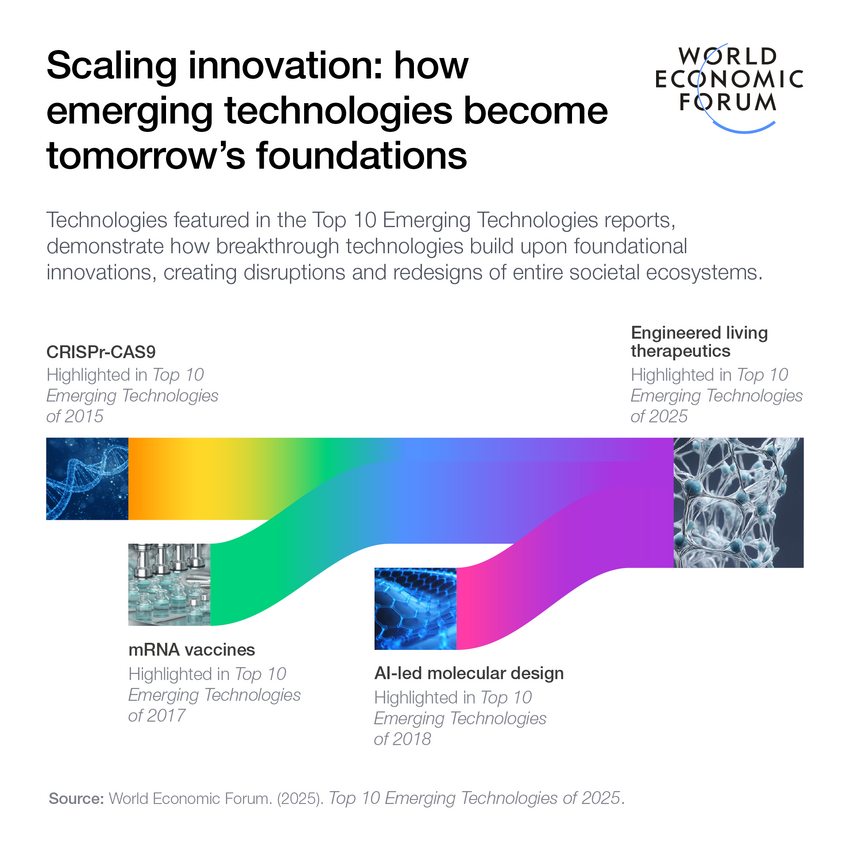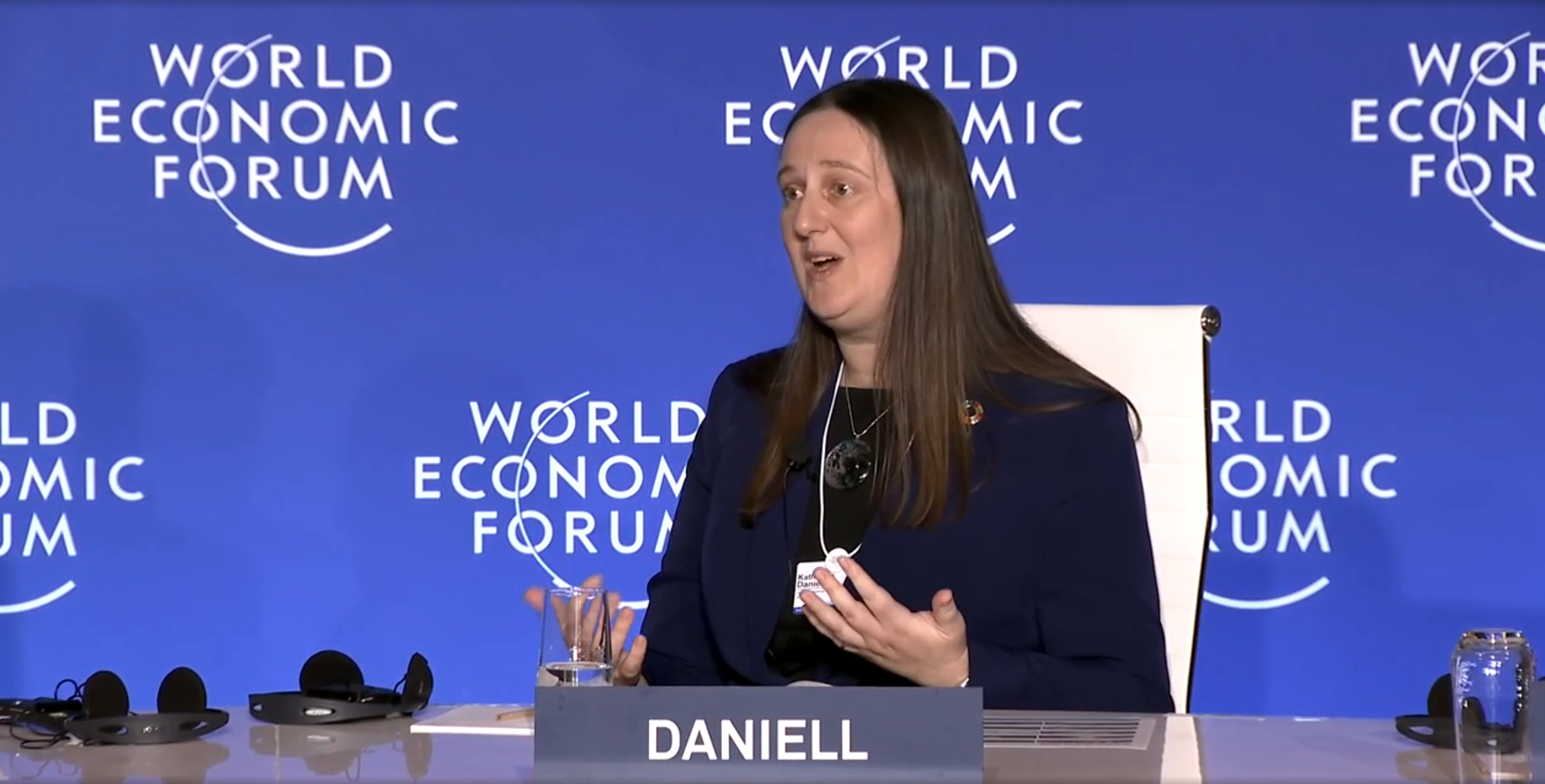Professor Katherine Daniell, Director of the School of Cybernetics, joins the World Economic Forum’s Annual Meeting of the New Champions to talk about the Top 10 Emerging Technologies of 2025.
Held in Tianjin China, the Annual Meeting of the New Champions 2025 (also known as Summer Davos) welcomes over 1700 leaders from 90 countries to come together and discuss solutions for shaping fairer, more sustainable economies.
This panel discussion launches the 13th annual report on Top 10 Emerging Technologies, one of the foremost reports published by the World Economic Forum.
Professor Katherine Daniell, Director of the ANU School of Cybernetics speaks on this panel alongside Jeremy Jurgens, Managing Director of the WEF Centre for the Fourth Industrial Revolution and Centre for Cybersecurity, Frederick Fenter, Frontiers Chief Executive Editor, and Distinguished Professor Lee Sang-Yup, Senior Vice-President, Research at the Korea Advanced Institute of Science and Technology (KAIST).
This panel discussion launched the report itself as well as diving into each of the technologies, discussing their linked intricacies, and the themes of the report. Another key discussion point during this conversation was the maturity level of these technologies, some of which including collaborative sensing and green nitrogen fixation are in phases of scaling up, others like GLP-1s for neurodegenerative diseases, structural battery composites and advanced nuclear technologies are commercially a little further out.
Collaborative sensing, generative watermarking, autonomous biochemical sensing are laying the groundwork for new kinds of trust. Katherine touches on the need for this new trust groundwork as “misinformation was one of the largest risks in the recent WEF risk report” with many of these technologies bringing back ideas of authenticity and are about how “we can trust and verify the kinds of information we’re seeing”.
“I think there are some real opportunities there to increase trust and usefulness of these kinds of technologies across our society.”
This is the second time Katherine has been a part of the panel on emerging technologies, you can read about her time at ‘Summer Davos’ in 2024 here. This year Katherine joined the Steering Committee behind the report.
You can see some insights from 3 of the top 10 emerging technologies of this year in the post below.
Top 10 emerging tech trends, straight from World Economic Forum’s latest Top 10 Emerging Technologies report#
1. Structural Battery Composites Structutral battery composites (SBCs) combine energy storage and structural strength in a single material, reducing weigt and improving efficiency in vehicles and aircraft. Thought still emerging, SBCs offer major sustainability and cost benefits. Challenges remain in performance, safety and regulation before widespread adoption can be achieved.
2. Osmotic Power Systems Osmotic power systems generate clean, steady energy from differences in water salinity, using membranes. Recent advances in materials and design have revived a technology that’s been around for a while, was struggling to gain traction. With pilot plants under way, osmotic power offers promise for sustainable electricity, water purification and resource recovery, pending further investment and cost reduction.
3. Advanced Nuclear Technologies As energy demand surges, advanced nuclear technologies are gaining momentum. Innovations like small modular reactors (SMRs) and next-gen cooling systems promise safer, cheaper and scalable green energy. With global investment rising, fission leads near-term deployment while fusion remains a long-term goal for a zero-carbon energy future.
4. Engineered Living Therapeutics Engineered “living therapeutics” are modified microbes or cells that produce drugs inside the body, offering targeted, sustained treatment with lower costs and fewer side effects. Enabled through research in the field of synthetic biology, this approach could transform chronic disease care. Key challenges remain around safety, regulation and large-scale clinical approval.
5. GLP-1s for Neurodegenerative Disease GLP-1 drugs, originally for diabetes and obesity, show promise in treating Alzheimer’s and Parkinson’s due to their neuroprotective effects. Early studies suggest benefits like reduced brain inflammation and improved cell function. While results are encouraging, more clinical trials and regulatory steps are needed to confirm effectiveness and accessibility.
6. Autonomous Biochemical Sensing Autonomous biochemical sensors continuously detect health or environmental markers without human input, using wireless, self-powered systems. Enabled through the convergence of bioengineering and nanotech, they offer real-time monitoring for applications like glucose tracking or pollution detection. Key challenges include sensor lifespan, cost and regulatory concerns.
7. Green Nitrogen Fixation Green nitrogen fixation aims to reduce the high carbon footprint of conventional ammonia production (which is critical for global food production). Emerging methods use renewable energy, engineered microbes or lithium-based systems to produce ammonia more sustainably. While still early-stage, these innovations could localize production and decarbonize agriculture and shipping.
8. Nanozymes Nanozymes are synthetic nanomaterials that mimic enzymes, offering greater stability, lower cost and wider use. They are advancing in medicine, particularly for cancer and neurodegenerative diseases, as well as in environmental cleanup and food safety. With a projected $57.95 billion market by 2034, commercialization is accelerating despite challenges.
9. Collaborative Sensing Collaborative sensing connects everyday sensors in homes, cities and vehicles into AI-powered networks. These systems enable real-time, shared decision-making for uses like traffic control, environmental monitoring and autonomous vehicles. Key challenges include data privacy, power and developing multi-modal algorithms for seamless integration.
10. Generative Watermarking Generative AI watermarking embeds invisible markers in text, images, audio and video to verify authenticity and trace origins. As AI content proliferates, these technologies help combat misinformation and protect intellectual property. While adoption is growing, challenges like evasion, lack of standards and ethical concerns still need resolution.
From this list of ten emerging technologies we can see four trends emerge:
- Trust and safety in a connected world
- Next-generation biotechnologies for health
- Redesigning industrial sustainability
- Integrating energy and materials
Across the technologies in each annual report we can see how the newest emerging technologies build on those previous new technologies.

The World Economic Forum aims to provide meaningful connection between stakeholders to establish trust, and build initiatives for cooperation and progress throughout events such as the Annual Meeting of the New Champions and more.
Whilst at the World Economic Forum Katherine was interviewed for The Innovator on leading through complexity, read the interview here.
Earlier this year Katherine and Chitresh Saraswat published a new White Paper about Early Warning Systems alongside WEF and World Meteorologic Organization contributors. This White Paper: Catalysing Business Engagement in Early Warning Systems was launched in January 2025 by the World Meterologic Organization’s Secretary General, Professor Celeste Saulo. You can read that report here.

